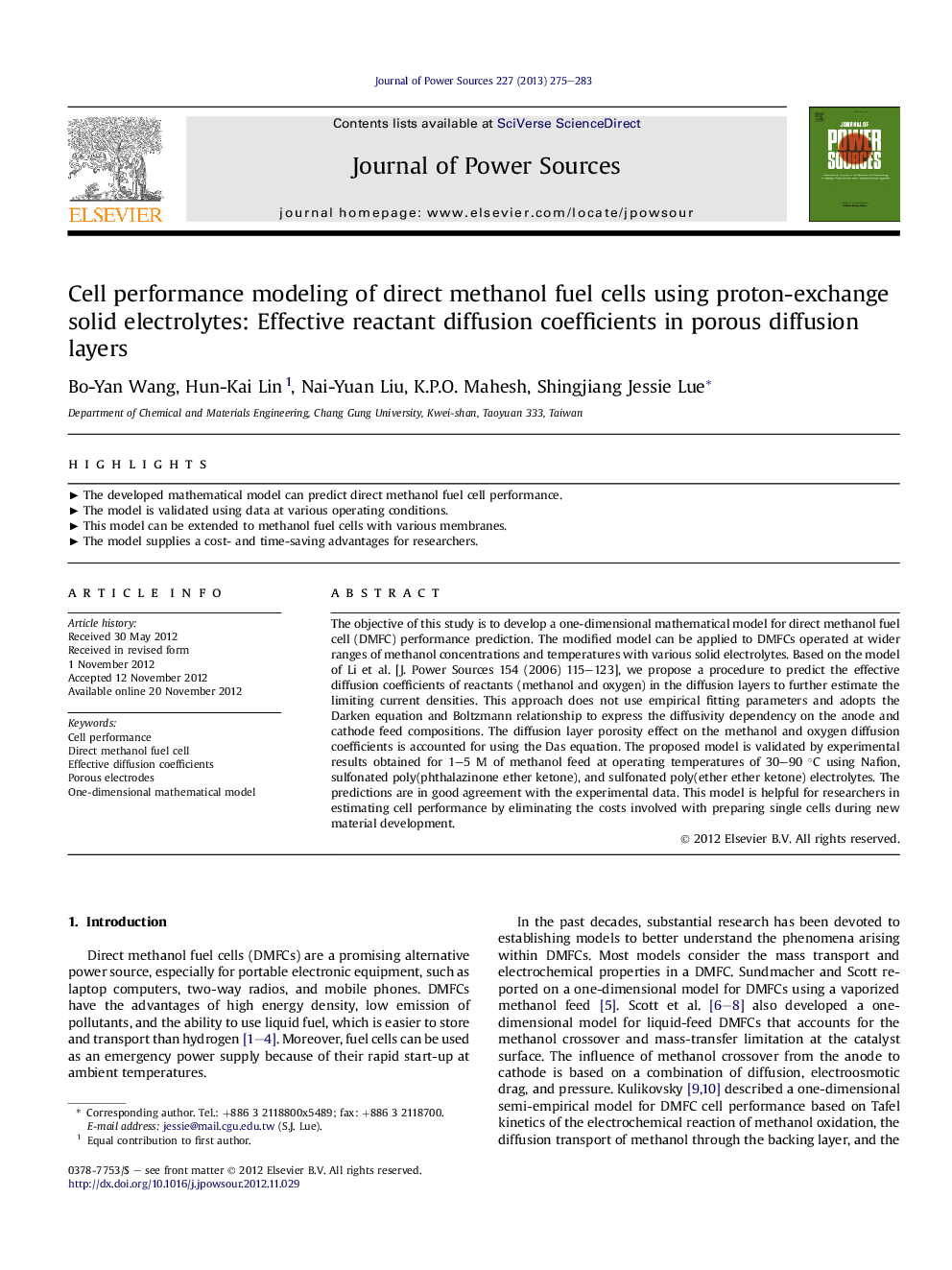| Article ID | Journal | Published Year | Pages | File Type |
|---|---|---|---|---|
| 1288287 | Journal of Power Sources | 2013 | 9 Pages |
The objective of this study is to develop a one-dimensional mathematical model for direct methanol fuel cell (DMFC) performance prediction. The modified model can be applied to DMFCs operated at wider ranges of methanol concentrations and temperatures with various solid electrolytes. Based on the model of Li et al. [J. Power Sources 154 (2006) 115–123], we propose a procedure to predict the effective diffusion coefficients of reactants (methanol and oxygen) in the diffusion layers to further estimate the limiting current densities. This approach does not use empirical fitting parameters and adopts the Darken equation and Boltzmann relationship to express the diffusivity dependency on the anode and cathode feed compositions. The diffusion layer porosity effect on the methanol and oxygen diffusion coefficients is accounted for using the Das equation. The proposed model is validated by experimental results obtained for 1–5 M of methanol feed at operating temperatures of 30–90 °C using Nafion, sulfonated poly(phthalazinone ether ketone), and sulfonated poly(ether ether ketone) electrolytes. The predictions are in good agreement with the experimental data. This model is helpful for researchers in estimating cell performance by eliminating the costs involved with preparing single cells during new material development.
► The developed mathematical model can predict direct methanol fuel cell performance. ► The model is validated using data at various operating conditions. ► This model can be extended to methanol fuel cells with various membranes. ► The model supplies a cost- and time-saving advantages for researchers.
